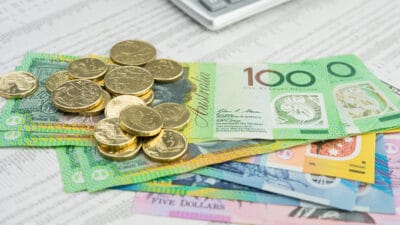There are a number of ways I could aim to turn a spare $8,000 into a $1,151 monthly passive income stream.
But I believe my best path to success here is to invest that money into ASX dividend shares.
Now, I'll need to be realistic here.
A $1,151 monthly passive income equates to $13,812 a year. A very tidy sum!
But, barring an investing miracle, I won't achieve this goal overnight with an $8,000 investment today.
With that said, here's how I'd aim to build that passive income stream to $1,151 a month over time.
Tapping ASX dividend stocks for passive income
With $8,000, I could invest in four or maybe even eight ASX dividend stocks without brokerage fees taking too big of a bite.
In this case, I'd aim for companies paying franked dividends. That should enable me to keep more of my passive income at tax time.
I'd also invest in a range of stocks operating across various sectors and, ideally, geographic locations. This kind of diversity will help lower the overall risk to my ASX income portfolio if any one company or sector hits a tough patch.
Of course, this will require a good bit of research on my time.
Instead, I could get instant diversity and a juicy yield from a single investment.
Namely, the BetaShares Australian Dividend Harvester Fund (ASX: HVST).
I can buy and sell shares in the ASX exchange traded fund (ETF) just like I would any other ASX dividend stock. Though I'll need to bear in mind the annual 0.72% management fees.
HVST holds anywhere from 40 to 60 blue-chip ASX dividend shares at any given time, providing more diversity than I could get with just eight stocks.
The ETF's top ten holdings include BHP Group Ltd (ASX: BHP), Commonwealth Bank of Australia (ASX: CBA), CSL Ltd (ASX: CSL) and National Australia Bank Ltd (ASX: NAB).
All of these S&P/ASX 200 Index (ASX: XJO) companies pay fully franked dividends. And they all have long track records of making reliable passive income payouts.
Atop NAB, CSL, BHP and CBA, HVST also holds a range of ASX 200 stocks in the consumer discretionary, energy and industrial sectors, among others.
As for that passive income, the ETF makes monthly payments, which can be handy.
As at 30 April, the fund's 12-month dividend yield was 6.5% a share, franked at 78.7%. That brings its grossed-up dividend yield to 8.7% a share.
Adding in those dividends, the BetaShares Australian Dividend Harvester Fund has delivered 15.7% in gross returns after fees over six months and 10.3% over a year.
I don't think the past six-month performance is sustainable over the long-term. But with history as my guide along with the high-quality ASX dividend shares held by the ETF, I believe 10% a year is realistic.
So, how long will it take me to garner my $1,151 a month or $13,812 a year in passive income from my $8,000 investment today?
To the maths!
As mentioned above, I'm going to need some patience before I can start drawing down my investment portfolio and enjoying that passive income stream.
But that's okay.
Investing is a long game.
Working with the grossed-up yield of 8.7%, I'll need $158,699 before I can start drawing down $1,151 a month in passive income without impacting that capital.
By reinvesting HVST's dividends over time and using the magic of compounding, I'll have achieved my passive income goal in 30 years.









